
09/2018 food & beverages
Read our interview with Andrea Petrini on how he thinks The World's 50 Best is actually harming young chefs and how he wants to push cooking towards a more haute couture approach with his Gelinaz! projects.
He's one of the most influential food critics in the world. Italian born Andrea Petrini (58) has been living in France for more than 30 years. He had been working as the chairman of The World's 50 Best for ten years, before he made it himself a task to challenge chefs out of their comfort zone. With Gelinaz! he created a combination of culinary think tank and interdisciplinary food happening, going far beyond the events and symposiums common for renowned chefs to attend. Gelinaz! Shuffle goes even more extreme: 40 international top chefs team up in twos and swap restaurants around the globe, working with a different team in an unknown environment. The outcome? Inspiring new dishes, friendships, and fun!
It's been almost a year since Gelinaz!'slast event, which took place in Austria during August 2017. What's coming next?
Right now we are planning something, that should hopefully take place before the end of the year in Los Angeles: Vespertine Plays Gelinaz!. A happening, an ambient study on site: a gig staged at chef Jordan Kahn's restaurant, more a spaceship than a restaurant. 15 or so Gelinaz! chefs, boys and girls, exploring the four floors of the restaurant welcoming only 22 guests at a time. With Eric Owen's visionary architecture all around.
Then, of course it's almost already 2019. The year we should take over Berlin and rave no stop with chefs, artists, and a bunch of musicians in interdisciplinary settings. Imagine the romantics of The Notwist underlying the emotionally charged cuisine of Rodolfo Guzman. Imagine Franco-Japanese Chiho Kanzaki virtuoso and Italo-Slovenian Antonia Klugman dialoguing with the live streams of sound of Christian Fennesz. Imagine May Chow from Hong-Kong and Madame Colombe Saint-Pierre from "le Bic" getting high behind the stove with Paula Temple. Or René Redzepi dialoguing in a Sakamoto's-like contemplative mood with the unrepentant spacey and elliptic rhythmic blueprints webbed by Alva Noto.
»Why Gelinaz! wants to empower girls? … It's simply because when you get more girls at the starting blocks … you get a different openness, a different pace, a different semiotics of gestures, a different stream of daredevils thought, a daring with a touch of behaviorism, less risk-conscious, that has rarely been seen before.«
In 2019 we should finally upgrade our Gelinaz! Shuffle series into a much more geopolitically thought-provoking format, the Gelinaz! Go East World Tour. An itinerant and simultaneous performance roaming through different Asian countries – from Taipei to Honk Kong, from Korea to Japan, China, and Thailand. A huge swapping of restaurants and identities and genders, with Asian chefs working in a collaborative, improvisational mood in culinary performances, where Western chefs tune in with Asian like-minded creative spirits in pools of culinary instant composing. More than just food (who cares about just that?) a real morphing of cultures, with women chefs starred in a Face Off with tradition-conscious cuisines questioned in their most improvisational side.
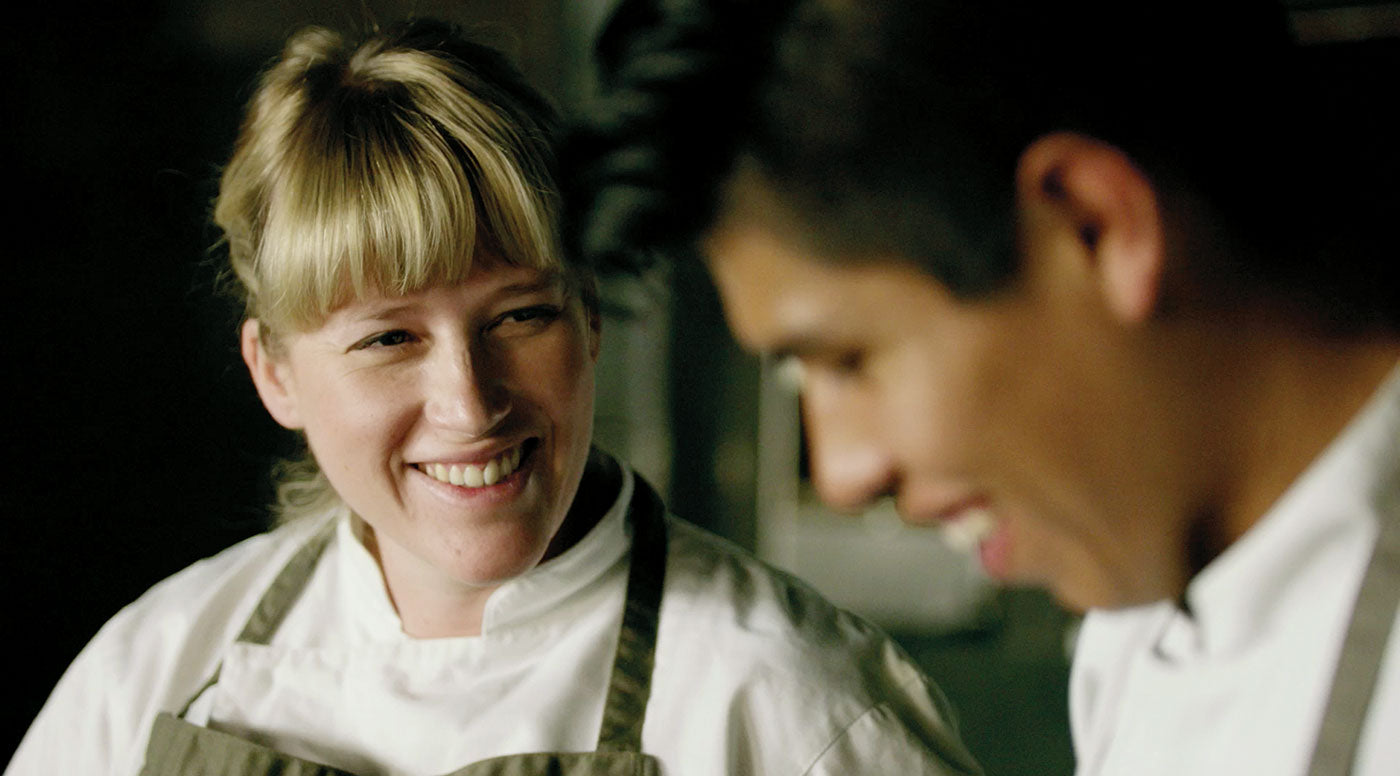
For the project Melting Pot Bolivia by Nordic by Nature contributor Claus Meyer, Danish chef Kamilla Seidler moved to La Paz to create a new kind of Bolivian cuisine, which she finds similar to an early culinary Nordic movement.
(Photo: Alex Grazioli)
Why Gelinaz! wants to empower girls? Not because of a gender-balanced orthodoxy or a wishfully thought affirmative action. It's simply because when you get more girls at the starting blocks and a bunch of more improvisationally inclined fantastic women chefs like May Chow, Karime Lopez, Bo Songvisava, Clare Smith, Kim Alter, Chloé Lorenzi, and Celine Pham you get a different openness, a different pace, a different semiotics of gestures, a different stream of daredevils thought, a daring with a touch of behaviorism, less risk-conscious, that has rarely been seen before. And that's awfully interesting.
Over the many years you worked as a chairman at The World's 50 Best Restaurants, what was the most dramatic shift or change in the gastronomic field?
Hey let's face it: Even worse than Mary Shelley, we have created a monster. Unlike Frankenstein's creature, it might look alive, but it's already dead and rotten from the inside. We are guilty of having messed up chefs' minds. Turning them into sprinters, wandering salespersons, lobbyists, pitilessly competitive self-publicists. They spend so much time outside their restaurants, that one might wonder if they have not already become virtual entities. Promotional holograms.
»We have created a monster … already dead and rotten from the inside. We are guilty of having messed up chefs' minds. Turning them into … pitilessly competitive self-publicists.«
Please, oh God please, try to reason them, showing them there still is a real life outside the game of the never-ending food congresses and showcases. Remember them, that if you have nothing relevant or truly inspirational to say and share with other people, you'd better skip the usual symposium. Ferran Adrià, who foresaw our dystopian world, warned everybody about this almost 20 years ago.
Please help us to get rid of all the wannabes. Show us the light at the end of the tunnel and past the Dark Forces, the occult influencers, and PRs pulling the strings behind our backs.
What advice would you give a restaurateur to make sure they keep their cooking and their concepts fresh?
Never take anything for granted, be totally aware that time - and therefore power - are on your side. A restaurant should be a theatre of open operations where everything is possible, a playground of surprises to swim against the tide. Despite the safety net, that you might call your know-how. Be digressive, expansive, empirical on a daily basis! And, most importantly, never forget to lead a restaurant, that incessantly switches locations, from the patriarchal point of view of the patron, the chef, to a more collective one.
»The tasting menu, the well-reasoned rationale of the à la carte is obsolete … Unless you just want to become a boring super chef cooking for bored and boring people.«
Always try to formulate and find out in advance, outside the usual patterns, what kind of expectations and desires lay in the guests' minds. The tasting menu, the well-reasoned rationale of the à la carte is obsolete. Life's too short to make it too predictable. Unless you just want to become a boring super chef cooking for bored and boring people.
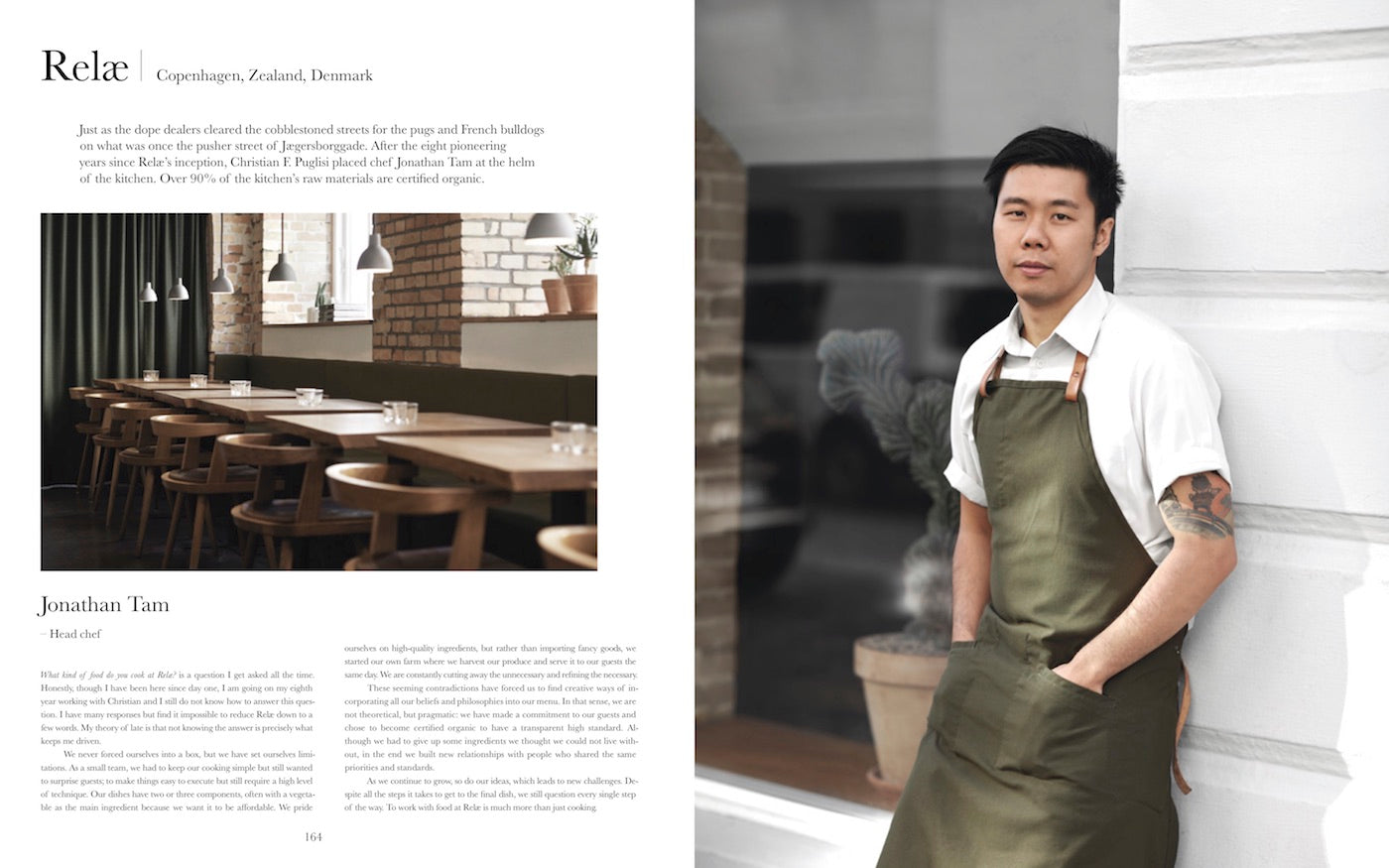
Jonathan Tam is the head chef at Relæ restaurant, where over 90 percent of the kitchen's raw materials are certified organic products. About the cuisine at Puglisi's restaurant, Tam says: "We are constantly cutting away the unnecessary and refining the necessary." (Photos: Michael Jepsen)
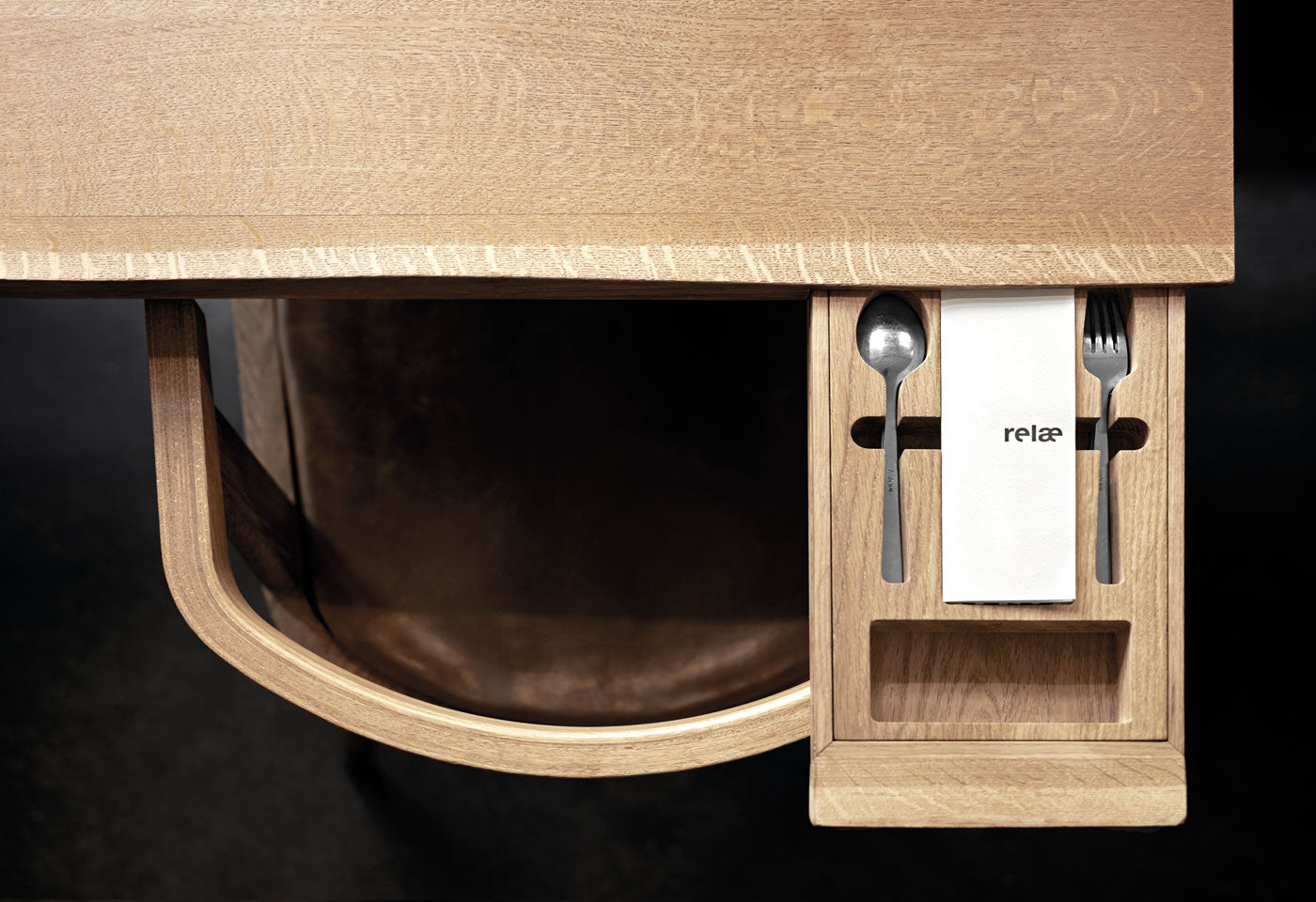
When you're seated at Relæ restaurant, cutlery is tucked away and ready to be pulled out when needed. (Photo: Michael Jepsen)
What is the most easily overlooked detail that can make or break the perfect dining experience?
The quality of the attention, the instant composing outside the usual partition. How long can you take a restaurant seriously, that repeats day after day the same gestures, the same approach, the same ready-made mechanics, and words, when it comes to dealing with the clients? A restaurant is not an assembly line, be conscious that the concept of alienation applies both to the staff and to the guests. The magic word is trying to be as personal as possible: personal in your work in the kitchen and in the way you approach the guests that - remember! - feed you. Most restaurants these days operate in a much more relaxed mood, and that's good for everybody.
»A restaurant is not an assembly line … be as personal as possible: personal in your work in the kitchen and in the way you approach the guests that - remember! - feed you.«
You are special, every guest is special: don't fall too easily into a ready-to-wear habit, think haute couture instead.
Tell us about your most memorable meals in Denmark.
The night that truly, madly, deeply changed my life, when I stepped for the first time inside Noma in May 2004? Or the last time (and of course any other time in between including the pop ups in Tokyo, Sydney and Tulum too) at Noma 2.0? The fastness, the sharpness, the almost conceptual forward thinking of my first time at Relæ entering what Puglisi's notes of intentions pre-described in those days as a possible Danish version of Inaki Aizpitarte's Chateaubriand (and in fact it was absolutely not)?
Also: in the old days when Geranium was in the park (and looked like Stuart Little's house) and was trying to find its way between science, nature, and Laura Ashley? Or when Amass opened its doors already doing wonders on the tightrope between uber-technique and immediate freshness with no ransom or whatsoever authorial trick or treat?
»How could I neglect that really unexpected and utterly mind-blowing first time at the 108 … That of course was way before Michelin, as heavy minded as an elephant in a jewelry micro-boutique shop, dropped a star and kind of screwed it up.«
What about a spoonful of poetry at Paul Cunningham even before Henné Kirkeby Krog when he was at The Paul in Tivoli? How could I forget my last dinner at Nicolai Nørregaard's Kadeau, two months ago, on the island of Bornholm?
How could I neglect that really unexpected and utterly mind-blowing first time, late August 2016, at the 108, still at the starting blocks but already and unprecedentedly pushing the idea of an haute couture neighborhood restaurant to the next level? That of course was way before Michelin, as heavy minded as an elephant in a jewelry micro-boutique shop, dropped a star and kind of screwed it up, implying that it was time to expel the à la carte and to reintroduce the predictability of the tasting menu. And therefore, comforting Kristian Baumann to upgrade his own 108 to another JUST AWFULLY GOOD fine dining restaurant. Between the two of us, Kristian is much better than that and deserves much better than that.
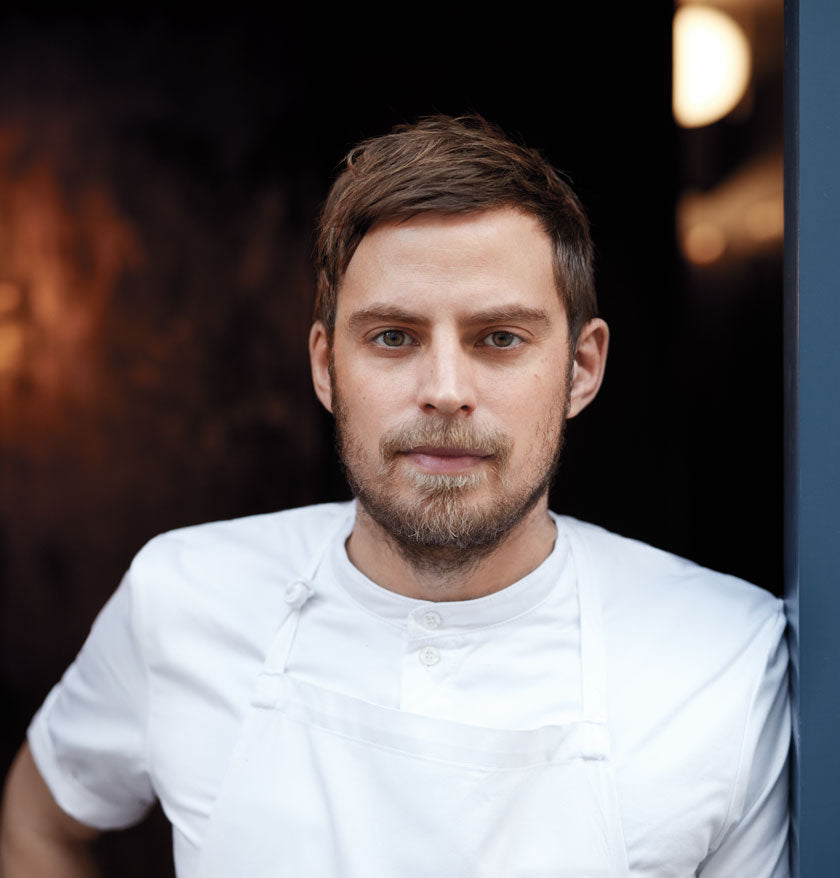
Nicolai Nørregaard is head chef and co-founder Kadeau. He has restaurants in Copenhagen and on the island of Bornholm. He and his team pick, gather, and harvest from their own garden and the wild. They also cooperate with farmers and suppliers of raw material. (Photo: Michael Jepsen)
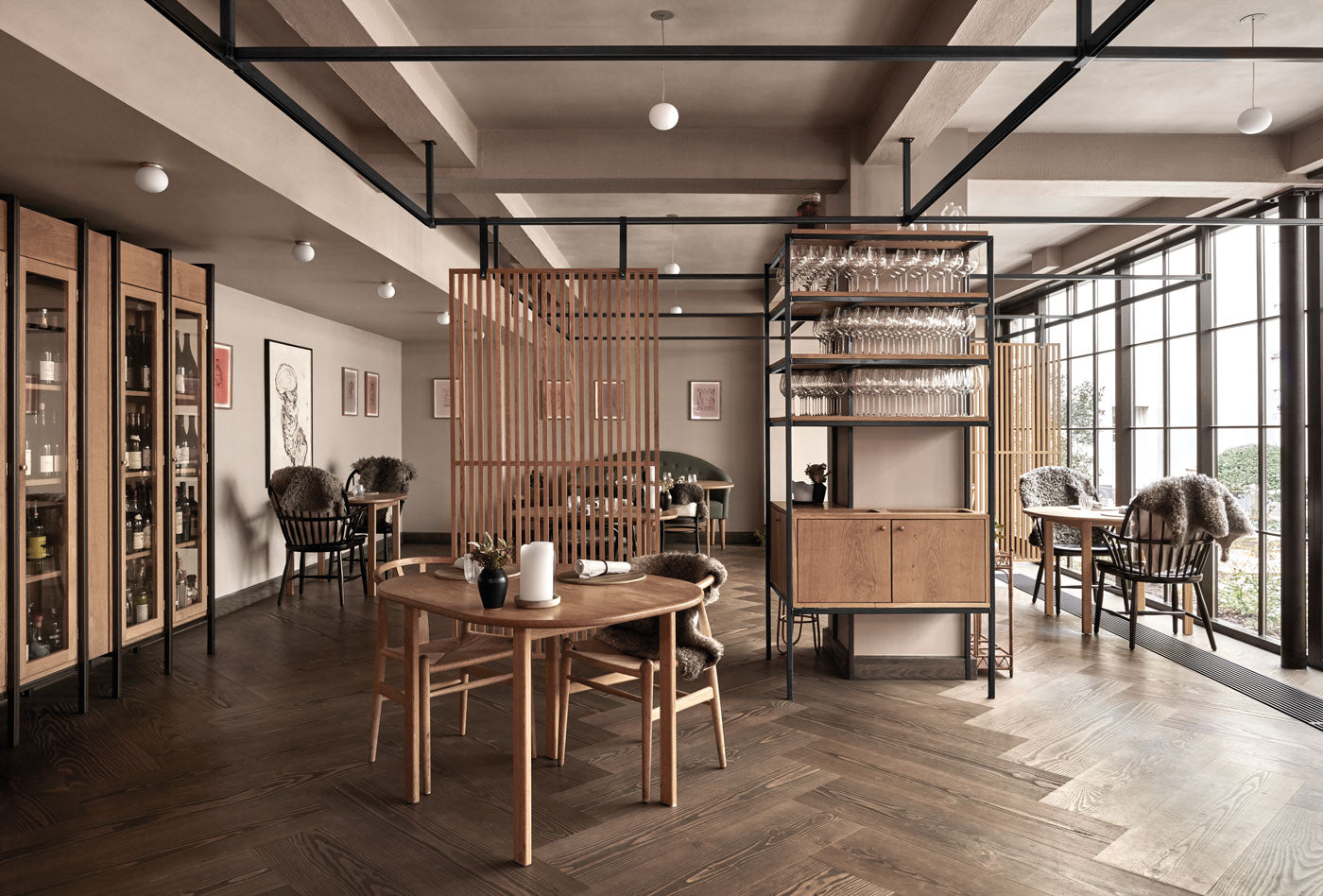
The interior of Kadeau has been designed by OeO Studio working closely with the three founders. (Photo: Michael Jepsen)
Now that we're undergoing a shift toward new Nordic cuisine, which regional cuisine is prime for reinvention? Where will the next site for gastronomic innovation take place?
Nobody knows. Is there somewhere a Virgin Island, a Neverland off the radars, where one could easily make things start anew? Is it possible to rhyme kinkiness and Kimchiness? Is Taipei ready to become the new China? Is Curitiba in Southern-East of Brazil, the new Swiss-like podium of national cuisine? How much longer before Chile takes the lead of the Latin liberation front? And what about Austria pushing forward, beyond the label of being the worldwide known new Slovenia, getting its trademark as the new crossroad that brings together, along with Berlin as a spin-off, all the simmering forces of an imaginary culinary "Mittel Europe"?
Now that a younger demographic has turned eating out into a cultural activity, what changes do you expect to happen in the culinary world in 15 years, or in the next 50?
Sooner or later, more later than sooner, everybody will accept that the usual blabla is not enough, that restaurants can be utopian islands on their own terms but need to get their hands dirty. Meaning: going into politics. You can save the world, fight against waste, promote local famers' food. But why, oh please, tell me why is still everybody cooking for filthy rich people? If Alain Ducasse was right when he said, 20 years ago, that in the future there will be less and less fine dining restaurants.
If you had to choose a food to represent the taste of your childhood, which would it be and why?
Bitterness, the one and only one element, Italian national treasure heralded by people like Paolo Lopriore, Pier Giorgio Parini, and Gianluca Gorini (go to his restaurant in San Piero in Bagno di Romagna) that could bring the people together and link Southern Europe (including Spain and Portugal) with the new Nordic Western Lands. Let's see what happens.
For home chefs on a budget, what do you recommend for dinner party offerings without breaking the bank?
Cook me chickpeas, cook me lentils - not caviar. Forage all your herbs, grow all your veggies, pick up your seaweed, ferment, pickle, cure, preserve, go freewheeling on everything you do.
»Drop your tweezers and get your hands dirty in everything you do. It's really extra fun!«
But do not let the vegan at heart, that you are, forget all the pleasures of the flesh and of the meat. Skip the pigeon, skip the quail - a.k.a. the new pigeon. Play the game-ish game. Pull out a rabbit of your damn hat - but make me a jackrabbit instead. It's much more royal than a hare. And please, please, go bareback, drop your tweezers and get your hands dirty in everything you do. It's really extra fun!
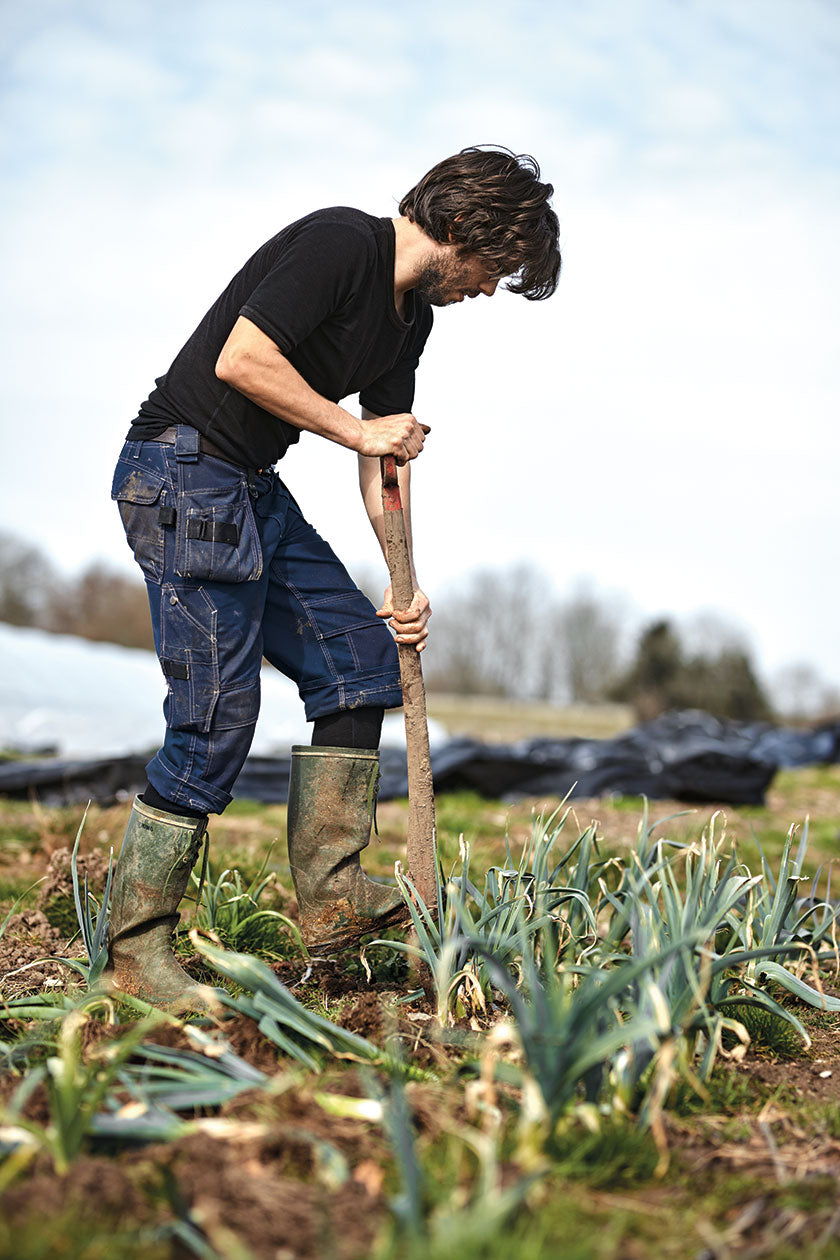
Chef and culinary entrepreneur Christian Puglisi has set up the Farm of Ideas, where vegetables are grown and cows graze to provide raw milk for the restaurant's own mozzarella production. (Photo: Michael Jepsen)
Andrea Petrini has written the foreword of Nordic by Nature. Make sure to browse through gestalten's and Borderless Co.'s book and read the stories of Denmark's most creative chefs along with beautiful photographs and recipes of refined Northern dishes.















